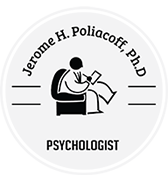Professional Psychology: Research & Practice has published online (in advance of print publication) an article: “Common Flaws in Forensic Reports and How to Avoid Them.” The authors are Stan Brodsky and Ken Pope.
- Here’s the abstract:
Flawed forensic psychological reports can create unfortunate, sometimes harmful, consequences, including (a) misinforming and misleading judges and juries; (b) blocking people who have been wronged from justice and vindication; (c) depriving people who have done nothing wrong of their savings, their business, their home, their children, their liberty, or their lives; and (d) allowing those who have done wrong to escape justice. This article discusses six common categories of flawed forensic psychological reports and presents seven steps to avoid writing flawed reports.
- Here’s an excerpt:
I Found What I Was Looking for
Reports afflicted with confirmation bias can be some of the easiest to write because the experts know early on what evidence they are looking for. It may be evidence that supports a pet theory. Or evidence that will please the retaining attorney, bringing repeat business and referrals. Confirmation bias evidence can emerge from strong first impressions or diagnoses previously been used to pigeonhole the examinee (Neal et al., 2022). A premature cognitive commitment leads to evidence consistent with that view. Experts tend not to see evidence contradicting a treasured view or include it but discount or downplay it. These tendencies and temptations influence decision making and can overrun thinking and the associated report.
Perhaps no one has described this shared human tendency to hold tight to a view better than Francis Bacon. In 1620, he wrote:
The human understanding when it has once adopted an opinion … draws all things else to support and agree with it. And though there be a greater number and weight of instances to be found on the other side, yet these it either neglects or despises, or else by some distinction sets aside and rejects. (Bacon, 1955, p. 472)
Because some experts attend to what they are looking for, they pile up evidence mostly on one side. Once assessors believe they have enough evidence to support their view, and in the apparent absence of any compelling contradictory evidence, they stop searching early. Some evaluators have fallen into the trap Kahneman (2011) described as believing in WYSIATI: What You See Is All There Is. They believe they have the whole story or at least all they need. One consequence is spending fewer hours poring over clinical charts or other documents.
REPRINTS & OTHER CORRESPONDENCE:
Stanley L. Brodsky, 2801 Bimini Place, Tuscaloosa, AL 35406. Email [email protected]


